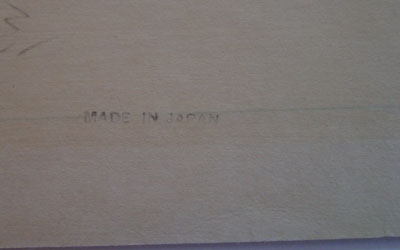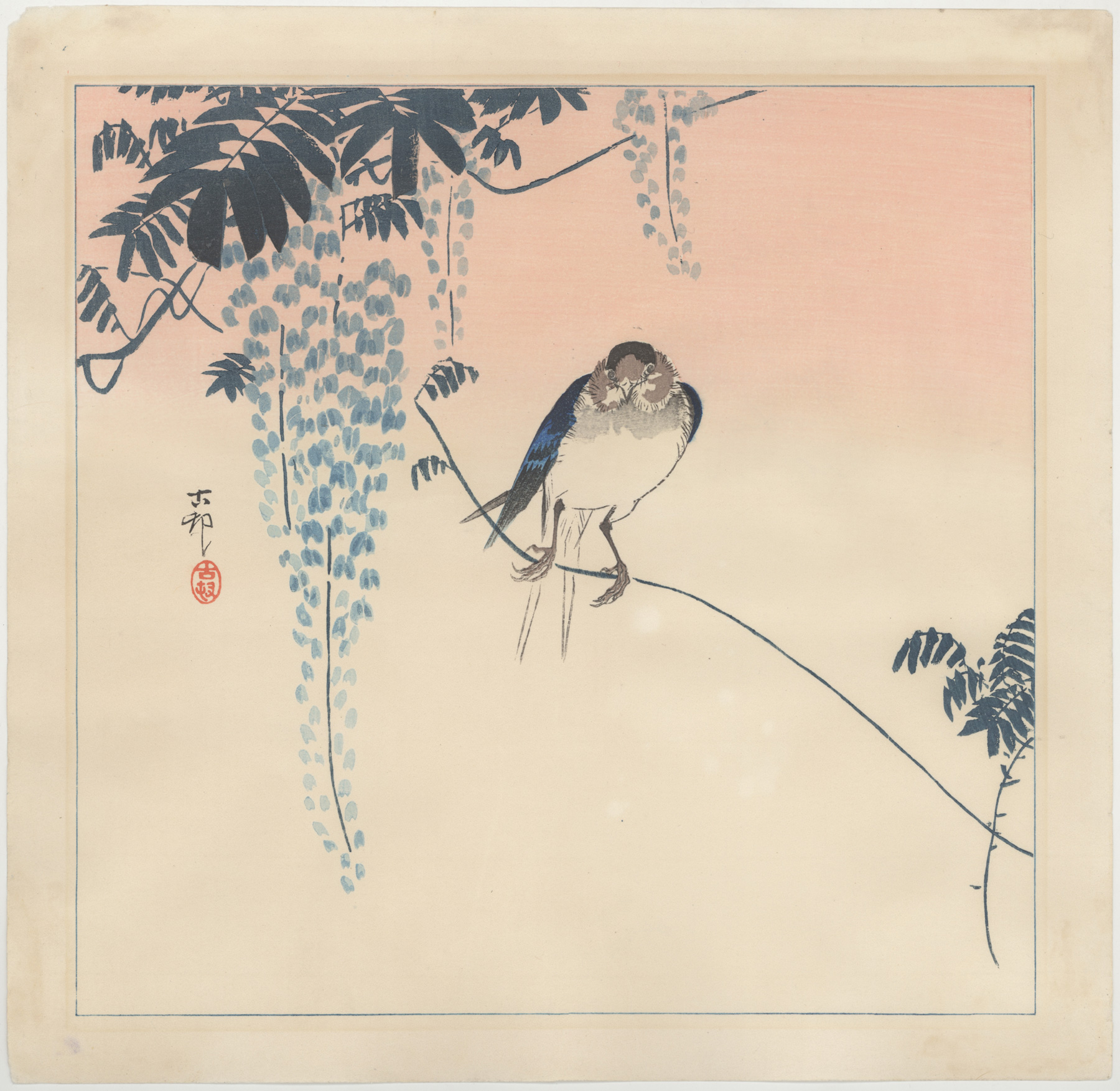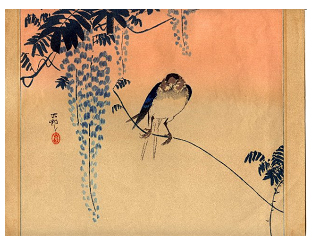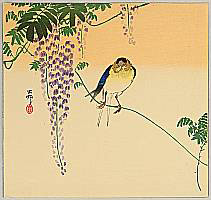About This Print
One of over fifty prints the artist made in the square shikishiban format. It is possible this print was published by the Daikokuya publishing house. If so, it was likely printed c. 1930s or possibly early 1940s, after Daikokuya was taken over by S. Koizumi from the Matsuki family. This print is stamped "MADE IN JAPAN" on the verso, as show below. For another Koson print in this collection in the shikishiban format see Pheasant.

Print verso

Crows, Cranes & Camellias: The Natural World of Ohara Koson 1877-1945
K-28.6
Made in Japan
The stamp "MADE IN JAPAN" indicates the print was destined for export to the United States and likely created between 1921, when the specific wording "Made in Japan" (rather than "Made in Nippon", for example) was required for imported goods, until 1939 when imports of Japanese products essentially ceased.
Source: Website of The Shin Hanga Skull & Bones Society which seems to be no longer maintained.
Q: I recently looked at a Koson print which had been stamped "Made in Japan" on the back of the print. Does anyone know whether this dates the print to the post-World War II period and if Watanabe stamped his later prints in this way? Or is this stamp an indication that the print is probably a more recent copy made for export by some other publisher? A: Around 1930, probably with the Smoot-Hawley Tariff Act (not the equally famous McKinley Tariff Act, enacted in the 1880's or so), the U.S. began to require country-of-origin markings on imported goods. Hence the beginnings of "Made in Japan", including our then lowly woodblock prints. Prints not designated for export did not require this marking. We have seen many known valid early editions marked "Made in Japan" with either an ink stamp or a pasted-on paper tag (which can come off, perhaps explaining the high proportion of extant prewar prints lacking any apparent marking).
More interesting to some is the period late 1945 to almost 1954, when the U.S. required "Made in Occupied Japan" markings. Equivalent wording was allowed in some cases, such as for space limitations, and it seems this loophole was stretched to include simply "Made in Japan", and sometimes even just "Japan". We have studied examples of all three, plus "Printed in Japan" and "printed by S. Watanabe Tokyo".
So....if you see a print marked "Made in Japan", you're probably no better or worse off than if it was not there at all. You simply know that the print was designated for export to the U.S.
Bleaching
Print was bleached in a calcium carbonate and water solution to remove heavy toning. Print lightened considerably, but some color fading resulted.
Pre-bleachingPost-bleaching
Print Details
| IHL Catalog | #14 |
| Title | Swallow and Wisteria |
| Series | |
| Artist | Ohara Koson (1877 - 1945) |
| Signature |  |
| Seal | Koson 古邨 in seal script (see above) |
| Publishing Date | unknown, but likely 1921/1939 based upon "MADE IN JAPAN" stamp verso |
| Edition | unknown edition with no publisher's seal |
| Publisher | no publisher listed in Crows, Cranes & Camellias: The Natural World of Ohara Koson 1877-1945 but possibly Daikokuya |
| Impression | excellent |
| Colors | fair |
| Condition | fair - overall fading due to bleaching of print to remove heavy toning; paper thinning; tape remnants verso; wrinkling; pencil writing verso |
| Miscellaneous | MADE IN JAPAN printed on verso. |
| Genre | shin-hanga (new prints) |
| Format | shikishiban |
| H x W Paper | 10 7/8 x 11 1/4 in. (27.6 x 28.6 cm) |
| H x W Image | 9 1/2 x 9 3/4 in. (24.1 x 24.8 cm) |
| Collections This Print | |
| Reference Literature | CatalogueRaisonné: Crows, Cranes & Camellias: The Natural World of Ohara Koson 1877-1945, Amy Reigle Newland, Jan Perrée, Robert Schaap, HoteiPublishing, 2003, p. 191, K28.6. |
5/28/2020
12/1/2019




